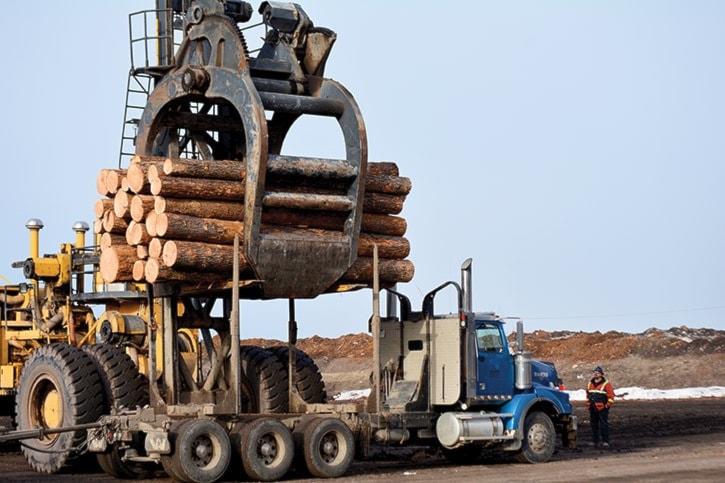The drop to three million cubic metres for the annual allowable cut (AAC) in the Williams Lake Timber Supply Area was not unexpected, said West Fraser Plywood Plant Manager Dave Walgren.
“It’s not outside the realm of what we thought it might be,” Walgren told the Tribune Thursday morning at the plant in Williams Lake.
In 2007 the AAC was increased from 3.7 to 5.77 million cubic metres because of the mountain pine beetle epidemic. The new AAC is restoring to more historical levels.
Within the new AAC, the maximum volume of live trees allowed for harvest is 1.5 million cubic metres, with the remaining half expected to be the salvage of dead and dying pine.
“Our plant uses about 400,000 cubic metres of live trees annually. There will be no immediate impact to this plant,” Walgren said.
“Will we have to look harder for the wood going into the future? Probably.”
After Chief Forester Dave Peterson announced the AAC on Wednesday, he said he received calls from people in the Williams Lake area saying they’d hoped the AAC would be set at four million cubic metres.
“Over the last ten years the average annual harvest in Williams Lake has been 3.3 million,” Peterson told the Tribune. “My understanding is the current level of harvest can continue under this AAC as long as the facilities that can, really focus on dead pine.”
As for how much longer the beetle impacted wood can be used, Peterson anticipated 10 years from now.
In the Williams Lake Timber Supply Area, it is estimated the mountain pine beetle infestation peaked in 2005-06 and now the cut level can decrease again to ensure the cut is sustainable in the long term.
Mayor Walt Cobb said he was not expecting the AAC level to be as announced, but after speaking with Peterson directly he felt a little more comfort that the cut had taken into consideration the needs of the region.
“The fact Dave Peterson lived in Williams Lake, knows the area, and I worked with him when we were going through the land use management plan is also reassuring,” Cobb said, adding he plans to meet soon with Tolko and West Fraser to discuss the future.
In his report, Peterson outlined other factors impacting the amount of land available for harvesting that included the creation of new old management areas and the removal of 141,769 hectares of land because of the Tsilhqot’in rights and title case.
Peterson, however, told the Tribune there is not a lot of short-term available wood within the title area that would have an impact on the AAC.
“We assumed no volume coming out of the title area,” he said.
The First Nations themselves still have a significant volume of wood in short-term licenses and licensees could still come to arrangements with the First Nations and get more volume that way, Peterson suggested.
